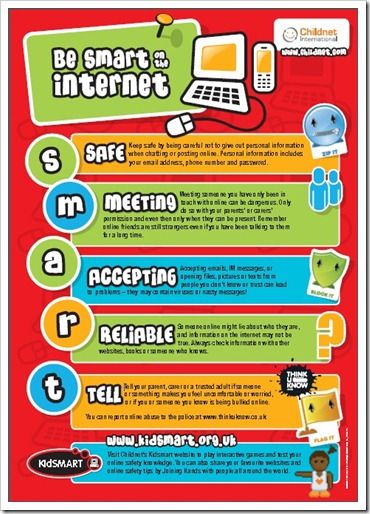Teaching Kids Personal Safety in the Digital Space
For kids today, digital literacy is essential to excel in life. Resistance to technology could place them behind the pack in a highly connected and digitized environment.
Your child will naturally rely on you to help them navigate their digitally enabled world. But it’s not just about introducing them to the latest tech tools and devices. As a parent, you are responsible for protecting and guiding them away from the many risks and dangers that lie beneath technology’s impressive facade. From stalking and bullying to financial fraud, cyberspace could be just as scary as the real world. So, teaching kids about personal safety in the digital space is critical if they are to make the best use of tech resources. Here’s what you should know about educating your child.
 Raise Awareness About Potential Threats
Raise Awareness About Potential Threats
Before you teach safety measures, kids should understand what makes them necessary. With adequate awareness, they would be more willing to align themselves with the required precautions.
However, consider their age before sharing too much. After all, you do not want your child to associate the internet with fear and anxiety. It is important to instill positive associations to ensure they make use of its countless benefits.
Moreover, keep in mind that cyber threats evolve with time, and new ones could emerge with advancements in technology and its applications. So, keeping up with them should be a priority: equipping yourself with accurate and up-to-date information is the only way to educate your child with the right knowledge and resources.
Here are some of the threats you and your child should be aware of:
● Cyberbullying
A staggering 46% of American teens have experienced bullying in the digital space. It is a prevalent issue, especially on social media, which could have damaging effects on a child’s self-esteem, confidence, and overall mental well-being.
● Cyberstalking
Cyberspace can harbor online predators, such as stalkers and pedophiles, who often pose as children to prey on young victims.
● Identity Theft
According to AARP data, nearly 1 million kids have become victims of child identity theft. This type of fraud is extremely difficult to detect and may take years to discover.
● Hacking and Ransomware
A cybercriminal could launch these attacks using several tactics. Email links, attachments, and malicious websites could all become tools to infiltrate devices and steal your child’s personal data, which they could then use for criminal activities.
● Data Mishandling
It is not just criminals who threaten kids’ safety: even actions of ordinary businesses may compromise youngsters’ digital security. Today, aggressive data collection practices are commonplace on the internet. From social media platforms and gaming sites to search engines, businesses of all types track, collect, and store user data. These practices will create a massive data footprint for your child at a very young age. And it goes without saying — the bigger the footprint, the higher the risk.
● Financial Scams
Kids are often more trusting than adults. So, they could easily fall victim to financial fraud. These can include fake competitions that demand entry fees, counterfeit products sold at a higher price, and countless other scams.
Teach Personal Safety Measures
Any lesson on personal safety in the digital space should begin with the basics of password security. However, you will need to cover a few other critical aspects.
● Data Sharing
To protect your child’s privacy, limit information sharing with both known and unknown parties on social media sites, forums, apps, and emails. Help your kids understand how any form of digital data may easily get into the hands of total strangers. It could happen due to intentional sharing and even data hacking and theft.
● Stranger Danger
Cyberspace offers an excellent opportunity to network and connect with those with similar interests. But it is also full of catfishing scams. Catfishing is when a criminal sets up a fake identity to pose as, for instance, a child. For kids, it could be extra challenging to identify these imposters. So, as an essential precaution, they should avoid conversing with strangers, even if they appear to be youngsters.
Kids should never share personal and identifiable information on the internet or agree to engage with anyone outside the digital space. If your child strikes up a friendship with someone they have met online, search their contact number on PhoneHistory, check their social media profiles, and prevent in-person meetups without your supervision.
● Phishing Emails
Phishing scams rely on malicious downloads, links, and requests to install viruses or collect confidential data such as login credentials. They could be extremely convincing in the guise of a familiar individual or reputed organization. But often, there are telltale signs that give away phishing emails, and with adequate caution, kids could easily protect themselves.
● Privacy Options
Websites requiring user accounts, such as social media platforms and shopping sites, usually offer privacy settings. They allow you to determine how you want your data handled. This is a useful feature for children to learn. For example, kids can choose to prevent these sites from accessing their location details and web activities by opting out of data tracking options.
In addition to teaching these essential safety measures, encourage your kids to ask questions and seek your help whenever they face an issue.
Set Controls
Until your kids are old enough to mind their safety, it is essential to have adequate controls in place. They will allow you to track and manage your child’s digital activities and protect them from potential cyber threats. For instance,
- Install a parental control app to limit screen time, monitor and restrict web activities, and track locations.
- Filter search results by turning on safe search features.
- Set up anti-virus software to prevent virus attacks.
- Keep software up-to-date by enabling automatic updates.
- Install a virtual private network or VPN to provide added protection from intrusive data tracking.
Conclusion
Teaching children about personal safety in the digital space is a priority for any parent in today’s tech-driven world. Start by educating them about potential threats before you help them learn essential precautions. Setting your own control mechanisms in place is equally crucial. It will help you track and manage your kids’ activities until they can safely navigate cyberspace.
Share this Entry
Business directory
Our Community Partners
 Raise Awareness About Potential Threats
Raise Awareness About Potential Threats Raise Awareness About Potential Threats
Raise Awareness About Potential Threats




